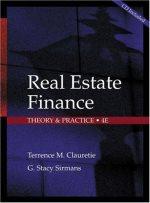Bethesda Mining is a midsized coal mining company with 20 mines located in Ohio, Pennsylvania, West Virginia, and Kentucky. The company operates deep mines as well as strip mines. Most of the coal mined is sold under contract, with excess production sold on the spot market. Bethesda has just been approached by Mid-Ohio Electric Company with a request to supply coal for its electric generators for the next six years. Bethesda Mining does not have enough excess capacity at its existing mines to guarantee the contract. The company is considering opening a strip mine in Ohio on 5,000 acres of land purchased 10 years ago for $5.4 million. Based on a recent appraisal, the company feels it could receive $7.5 million on an aftertax basis if it sold the land today. Strip mining is a process where the layers of topsoil above a coal vein are removed and the exposed coal is removed. Some time ago, the company would simply remove the coal and leave the land in an unusable condition. Changes in mining regulations now force a company to reclaim the land; that is, when the mining is completed, the land must be restored to near its original condition. The land can then be used for other purposes. As they are currently operating at full capacity, Bethesda will need to purchase additional equipment, which will cost $53 million. The equipment will be depreciated on a seven-year MACRS schedule. The contract only runs for six years. At that time the coal from the site will be entirely mined. The company feels that the equipment can be sold for 50 percent of its initial purchase price. However, Bethesda plans to open another strip mine at that time and will use the equipment at the new mine. The contract calls for the delivery of 500,000 tons of coal per year at a price of $65 per ton. Bethesda Mining feels that coal production will be 700,000 tons, 800,000 tons, 820,000 tons, 700,000 tons, 750.000 tons, and 700,000 tons, respectively, over the next six years. The excess production will be sold in the spot market at an average of $45 per ton, Variable costs amount to $22 per ton and fixed costs are $4 million per year. The mine will require a net working capital investment of 6 percent of sales. The NWC will be built up in the year prior to the sales. This means that Bethesda must have 6% of year 1 sales volume as the amount of NWC at the end of year 0. Bethesda will be responsible for reclaiming the land at termination of the mining. This will occur in Year 7. The company uses an outside company for reclamation of all the company's strip mines. It is estimated the cost of reclamation will be $4.2 million. After the land is reclaimed, the company plans to donate the land to the state for use as a public park and recreation area as a condition to receive the necessary mining permits. This will occur in Year 8 and result in a charitable expense deduction of $75 million. Bethesda faces a 21 percent tax rate. You have been approached by the president of the company, Marry, with a request to analyze the project. Task 1 (5 points) Calculate each year's sales of this project from Year 1 to Year 6 Task 2 (21 points) Estimate the operating cash flows (OCF) of this project from Year 1 to Years Guidelines: 1. Construct a table where you have sales, variable costs, fixed costs, depreciation, earning before tax (EBT), tax, net income, and OCF in each row. 2. Assume that a loss in any year will result in a tax credit (i.e., leave the negative tax as it is) 3. Use the 7-year MACRS depreciation schedule that appears in a separate Excel file named "MACRS, Betas, and Bonds." Task 3 (16 points) Calculate the equipment's after-tax salvage value at Year 6. Guideline: Construct a table where you have equipment, depreciation, accumulated depreciation, and book value in each row








